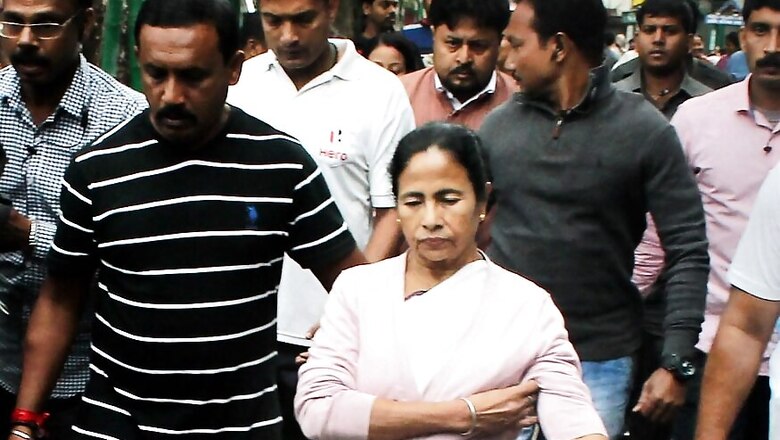
views
New Delhi: “The West Bengal Chief Minister is playing with fire,” a visibly nervous BJP leader said throwing an occasional glance at his smartphone screen to seek updates on the situation in Darjeeling. Office of Gorkhaland Janmukti Morcha (GJM) leader Bimal Gurung had just been raided by the state police.
The hardest hit probably would be the BJP which has been assiduously attempting to make inroads in West Bengal as a part of look-East policy. For a national party, especially one trying to find toehold in the West Bengal politics, it is an unenviable situation. Any polarisation which pitches Hills vs the plains practically translates to 1.8 million Nepali speaking people versus 90 million Bangla speakers; 1 Lok Sabha seats as against 41 seats; a mere half a dozen assembly segments vs 294 in the rest of the state.
Similarly, the current agitation in Darjeeling has been triggered by her government’s decision earlier this year to implement the three-language formula making Bangla compulsory in primary and secondary-level schools. The GJM, which has for long agitated for a separate state for Nepali-speaking population, was bound to object.
When GJM leader Roshan Giri met Home Minister Rajnath Singh on Thursday, he was blunt in rejecting any moves by the Union government to call for tripartite talks. The issue now is not autonomy, he is believed to have told the Home Minister. The pending matter which needs to be decided is separate statehood.
In its manifesto for 2014 general elections, the BJP stated it will “sympathetically examine and appropriately consider the long-pending demands of the Gorkhas, the Adivasis and other people of Darjeeling district and the Dooars region; of the Kamtapuri, Rajbongshi and other people of North Bengal (including recognition of their language)”.
The current crisis puts national parties in a piquant situation. Especially, the BJP. It has had long-standing relations with the GJM. Two of its top leaders have won from Darjeeling to enter the Lok Sabha in the last two general elections — Jaswant Singh in 2009 and SS Ahluwalia in 2014.
But that was when the party had little stakes in West Bengal. It was relying heavily on West, North and central India to shore up numbers. Any seats from states outside its core constituency was just a bonus.
Three years later, as it prepares for the next general elections, West Bengal, Odisha and Andhra Pradesh now assume far greater importance. These three provinces have the potential to off-set any deficit in states where the party has already peaked.
Which is why, the BJP of late, has laid so much emphasis on Bengal. It has relentlessly taken on the ruling dispensation. The party has worked to elbow out Congress and the Left as the main challenger to the TMC. If the results to the recent by-elections are anything to go by, the BJP was steadily improving its performance in the state.
The current situation squeezes political space for the BJP leaders in the state to take a stand on an issue which is highly emotive and polarising. Concomitantly, the party in power at the Centre also has to contend with the promise made to the people to Gorkhaland in 2014 manifesto.

















Comments
0 comment